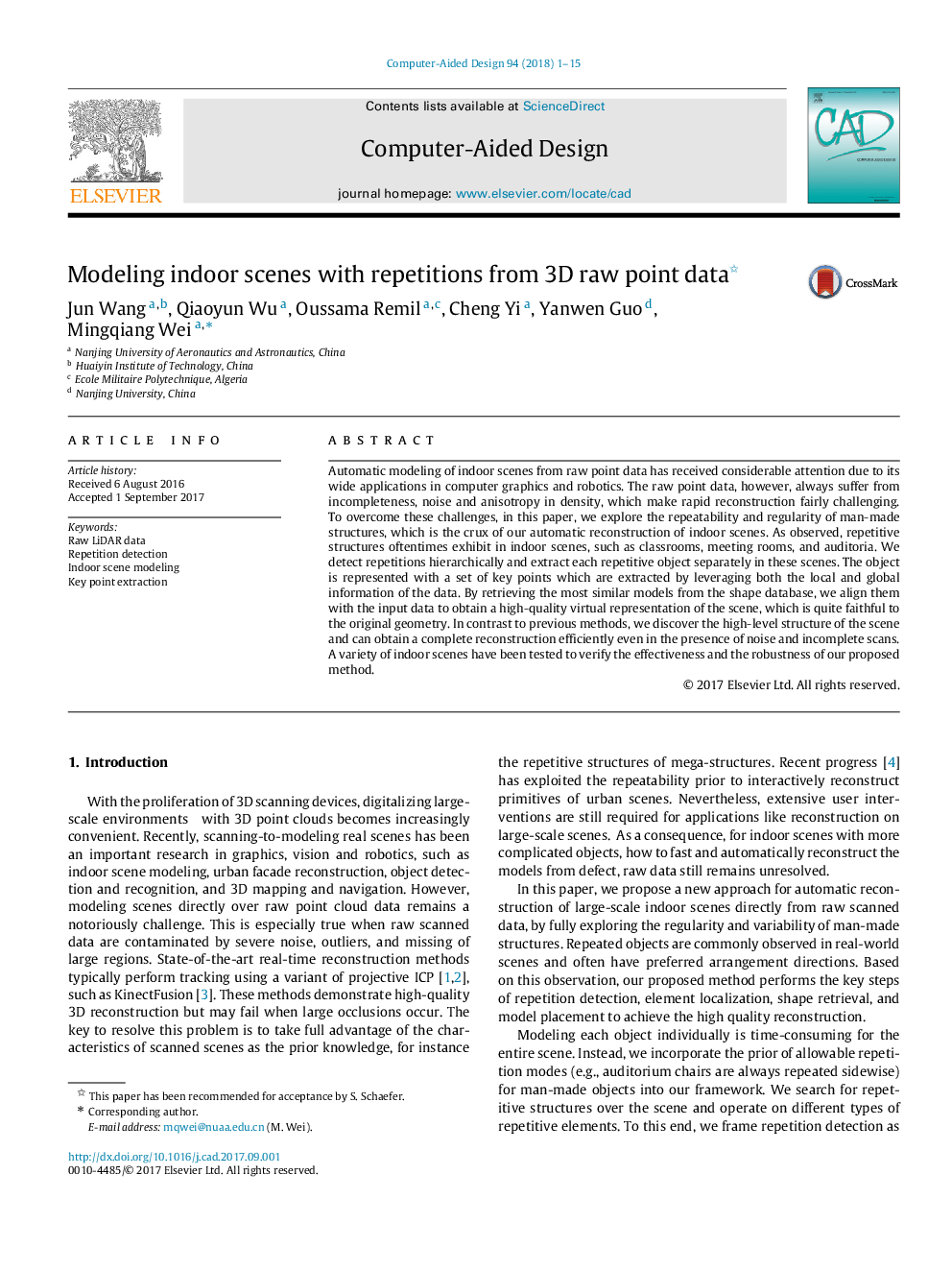| Article ID | Journal | Published Year | Pages | File Type |
|---|---|---|---|---|
| 4952539 | Computer-Aided Design | 2018 | 15 Pages |
â¢We present a fast reconstruction method for repetitive structures from raw LiDAR data.â¢We propose a novel algorithm to accurately detect repetitions from raw point clouds.â¢We design a robust key point extraction algorithm from defect-ridden, raw point data.
Automatic modeling of indoor scenes from raw point data has received considerable attention due to its wide applications in computer graphics and robotics. The raw point data, however, always suffer from incompleteness, noise and anisotropy in density, which make rapid reconstruction fairly challenging. To overcome these challenges, in this paper, we explore the repeatability and regularity of man-made structures, which is the crux of our automatic reconstruction of indoor scenes. As observed, repetitive structures oftentimes exhibit in indoor scenes, such as classrooms, meeting rooms, and auditoria. We detect repetitions hierarchically and extract each repetitive object separately in these scenes. The object is represented with a set of key points which are extracted by leveraging both the local and global information of the data. By retrieving the most similar models from the shape database, we align them with the input data to obtain a high-quality virtual representation of the scene, which is quite faithful to the original geometry. In contrast to previous methods, we discover the high-level structure of the scene and can obtain a complete reconstruction efficiently even in the presence of noise and incomplete scans. A variety of indoor scenes have been tested to verify the effectiveness and the robustness of our proposed method.
